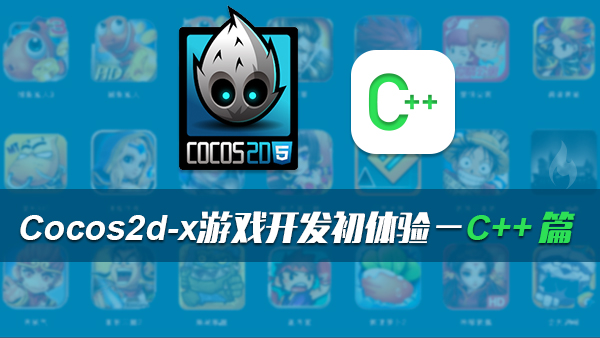本文介绍了C++11的新特性和基础语法,帮助读者快速入门c++11学习,涵盖了变量、运算符、控制结构和面向对象编程等内容。文章还详细讲解了标准库的使用方法,包括常用的容器类型和智能指针,并提供了实际编程中的示例和调试技巧。
C++11基础入门 C++语言简介C++是一种静态类型、编译式的通用、程序化的编程语言。C++具有C语言的高效和低级操作能力,同时提供了面向对象编程的支持,包括类、继承、多态等特性。C++被广泛应用于系统软件、嵌入式系统、图形用户界面、游戏开发等多个领域。C++语言的诞生可以追溯到20世纪80年代,由Bjarne Stroustrup在贝尔实验室开发,它兼容C语言,但增加了面向对象的特性。
C++11新特性概览C++11是C++语言的一个重要版本,引入了许多新特性,改进了旧有的语法,并提供了更强大的功能。主要的新特性包括:
- 自动类型推断(auto关键字):自动推断变量的类型。
- 右值引用与移动语义:使得资源转移更为高效。
- lambda表达式:使代码更加简洁,支持匿名函数。
- 范围for循环:遍历容器更加方便。
- 智能指针:提高内存管理的安全性。
- 类型推断(decltype关键字):推断表达式的类型。
- 新的库特性:例如新的容器类型和算法。
这些特性使得C++11在编写高效、清晰的代码方面更为强大。
安装开发环境安装C++开发环境需要以下几个步骤:
- 安装编译器:最常用的编译器是GCC和Clang。对于Windows用户,MinGW和MSVC也是不错的选择。
- 安装IDE或文本编辑器:集成开发环境如Visual Studio、Code::Blocks,或者文本编辑器如Vim、Sublime Text、VSCode等都可以。
以下是安装GCC和Clang在Ubuntu上的步骤:
- 更新软件包列表:
sudo apt-get update - 安装GCC和G++:
sudo apt-get install gcc g++ - 安装Clang:
sudo apt-get install clang
编写代码示例
编写一个简单的"Hello, World!"程序:
#include <iostream>
int main() {
std::cout << "Hello, World!" << std::endl;
return 0;
}编译与运行代码
使用GCC编译并运行代码:
g++ -o hello hello.cpp
./hello或使用Clang:
clang++ -o hello hello.cpp
./helloC++中,变量是存储数据的基本单元,通过声明变量可以定义其类型和名称。C++支持多种基本数据类型,包括整型、浮点型、字符型等。
声明变量示例
int a; // 整型变量
float b; // 浮点型变量
char c; // 字符型变量初始化变量
直接在声明时初始化变量:
int a = 10;
float b = 3.14f;
char c = 'A';其他类型
C++还支持其他类型,例如布尔型、长整型等。
bool isTrue = true;
long l = 1234567890;
unsigned int u = 10;运算符用于执行算术、逻辑和位操作等任务。常见的运算符有算术运算符、逻辑运算符和位运算符等。
算术运算符
加法、减法、乘法、除法、取余等:
int a = 10, b = 5;
int sum = a + b;
int diff = a - b;
int prod = a * b;
int quot = a / b;
int rem = a % b;逻辑运算符
逻辑与、逻辑或、逻辑非等:
bool x = true, y = false;
bool andResult = x && y;
bool orResult = x || y;
bool notResult = !x;位运算符
位与、位或、位异或、位非等:
int x = 5; // 二进制为 0101
int y = 3; // 二进制为 0011
int andResult = x & y; // 0001
int orResult = x | y; // 0111
int xorResult = x ^ y; // 0110
int notResult = ~x; // -0110 (补码)控制结构用于控制程序的执行流程,包括条件语句、循环语句等。
if语句
int a = 10;
if (a > 5) {
std::cout << "a is greater than 5" << std::endl;
}switch语句
int a = 2;
switch (a) {
case 1:
std::cout << "a is 1" << std::endl;
break;
case 2:
std::cout << "a is 2" << std::endl;
break;
default:
std::cout << "a is neither 1 nor 2" << std::endl;
}循环语句
for循环
for (int i = 0; i < 5; i++) {
std::cout << "i: " << i << std::endl;
}while循环
int i = 0;
while (i < 5) {
std::cout << "i: " << i << std::endl;
i++;
}do-while循环
int i = 0;
do {
std::cout << "i: " << i << std::endl;
i++;
} while (i < 5);函数是完成特定功能的代码块,可以被多次调用。函数定义包括返回类型、函数名、参数列表和函数体。
函数定义
int add(int a, int b) {
return a + b;
}函数调用
int result = add(3, 5);
std::cout << "Result: " << result << std::endl;类是面向对象编程的基础,用于定义对象的结构和行为。类中包含成员变量和成员函数。
定义类
class Person {
public:
std::string name;
int age;
void sayHello() {
std::cout << "Hello, my name is " << name << " and I am " << age << " years old." << std::endl;
}
};创建对象
Person p;
p.name = "Alice";
p.age = 25;
p.sayHello();构造函数用于初始化对象,析构函数用于释放对象资源。
构造函数
class Person {
public:
std::string name;
int age;
Person(std::string n, int a) : name(n), age(a) {}
void sayHello() {
std::cout << "Hello, my name is " << name << " and I am " << age << " years old." << std::endl;
}
};
Person p("Alice", 25);
p.sayHello();析构函数
class Person {
public:
std::string name;
int age;
Person(std::string n, int a) : name(n), age(a) {}
~Person() {
std::cout << "Person object destroyed" << std::endl;
}
void sayHello() {
std::cout << "Hello, my name is " << name << " and I am " << age << " years old." << std::endl;
}
};
Person p("Alice", 25);
p.sayHello();类中的成员变量和成员函数定义了类的属性和行为。
成员变量
class Person {
public:
std::string name;
int age;
Person(std::string n, int a) : name(n), age(a) {}
void sayHello() {
std::cout << "Hello, my name is " << name << " and I am " << age << " years old." << std::endl;
}
};成员函数
class Person {
public:
std::string name;
int age;
Person(std::string n, int a) : name(n), age(a) {}
void sayHello() {
std::cout << "Hello, my name is " << name << " and I am " << age << " years old." << std::endl;
}
};
Person p("Alice", 25);
p.sayHello();继承允许子类继承父类的属性和方法,多态允许在运行时动态选择方法。
继承
class Person {
public:
std::string name;
int age;
Person(std::string n, int a) : name(n), age(a) {}
void sayHello() {
std::cout << "Hello, my name is " << name << " and I am " << age << " years old." << std::endl;
}
};
class Student : public Person {
public:
std::string studentID;
Student(std::string n, int a, std::string id) : Person(n, a), studentID(id) {}
void sayID() {
std::cout << "My student ID is " << studentID << std::endl;
}
};
Student s("Alice", 25, "12345");
s.sayHello();
s.sayID();多态
#include <iostream>
class Animal {
public:
virtual void speak() = 0; // 纯虚函数,使得Animal成为一个抽象基类
};
class Dog : public Animal {
public:
void speak() override {
std::cout << "Woof!" << std::endl;
}
};
class Cat : public Animal {
public:
void speak() override {
std::cout << "Meow!" << std::endl;
}
};
int main() {
Dog d;
Cat c;
Animal *a1 = &d;
Animal *a2 = &c;
a1->speak();
a2->speak();
return 0;
}C++标准库提供了多种容器类型,如vector、list、map等,用于管理和操作数据。
vector容器
vector是动态数组,支持随机访问。
#include <vector>
#include <iostream>
int main() {
std::vector<int> vec;
vec.push_back(1);
vec.push_back(2);
vec.push_back(3);
for (int i : vec) {
std::cout << i << std::endl;
}
return 0;
}list容器
list是双向链表,支持插入和删除操作。
#include <list>
#include <iostream>
int main() {
std::list<int> li;
li.push_back(1);
li.push_back(2);
li.push_back(3);
for (int i : li) {
std::cout << i << std::endl;
}
return 0;
}map容器
map是关联容器,用于存储键值对。
#include <map>
#include <iostream>
int main() {
std::map<std::string, int> mp;
mp["Alice"] = 25;
mp["Bob"] = 30;
for (const auto& kv : mp) {
std::cout << kv.first << " : " << kv.second << std::endl;
}
return 0;
}set容器
set容器是一种有序集合,不允许重复元素。
#include <set>
#include <iostream>
int main() {
std::set<int> st = {1, 2, 3, 4, 5};
for (int i : st) {
std::cout << i << std::endl;
}
return 0;
}string类
string类用于操作字符串,提供了丰富的字符串操作方法。
#include <string>
#include <iostream>
int main() {
std::string str = "Hello, World!";
std::cout << str << std::endl;
str += " How are you?";
std::cout << str << std::endl;
return 0;
}iostream类
iostream类用于输入输出流操作。
#include <iostream>
int main() {
int a;
std::cout << "Enter a number: ";
std::cin >> a;
std::cout << "You entered: " << a << std::endl;
return 0;
}vector容器
#include <vector>
#include <iostream>
int main() {
std::vector<int> vec = {1, 2, 3, 4, 5};
for (int i : vec) {
std::cout << i << std::endl;
}
return 0;
}map容器
#include <map>
#include <iostream>
int main() {
std::map<std::string, int> mp = {{"Alice", 25}, {"Bob", 30}};
for (const auto& kv : mp) {
std::cout << kv.first << " : " << kv.second << std::endl;
}
return 0;
}set容器
#include <set>
#include <iostream>
int main() {
std::set<int> st = {1, 2, 3, 4, 5};
for (int i : st) {
std::cout << i << std::endl;
}
return 0;
}lambda表达式是一种匿名函数,可以临时定义并立即使用。
基本用法
#include <iostream>
int main() {
auto add = [](int a, int b) { return a + b; };
std::cout << "Sum: " << add(3, 5) << std::endl;
return 0;
}捕获外部变量
#include <iostream>
int main() {
int x = 10;
auto func = [x]() { std::cout << "x: " << x << std::endl; };
func();
return 0;
}使用引用捕获
#include <iostream>
int main() {
int x = 10;
auto func = [&x]() { x = 20; };
func();
std::cout << "x: " << x << std::endl;
return 0;
}智能指针是C++11引入的一种资源管理机制,可以自动管理内存释放。
shared_ptr
#include <memory>
#include <iostream>
int main() {
std::shared_ptr<int> ptr = std::make_shared<int>(10);
std::cout << *ptr << std::endl;
return 0;
}unique_ptr
#include <memory>
#include <iostream>
int main() {
std::unique_ptr<int> ptr(new int(10));
std::cout << *ptr << std::endl;
return 0;
}range-based for循环可以遍历容器中的元素,简化代码。
#include <vector>
#include <iostream>
int main() {
std::vector<int> vec = {1, 2, 3, 4, 5};
for (int i : vec) {
std::cout << i << std::endl;
}
return 0;
}auto关键字用于自动推断变量的类型,简化代码。
#include <iostream>
int main() {
auto x = 10;
auto y = 3.14f;
auto z = "Hello, World!";
std::cout << x << std::endl;
std::cout << y << std::endl;
std::cout << z << std::endl;
return 0;
}decltype关键字用于推断表达式的类型。
#include <iostream>
int main() {
int x = 10;
decltype(x) y = 20;
std::cout << y << std::endl;
return 0;
}在实际编程中,C++11提供了更强大的语法和库支持,使得代码更加简洁和高效。例如,使用智能指针管理内存,使用lambda表达式简化代码,使用新的容器类型处理数据等。
示例:使用智能指针管理内存
#include <memory>
#include <iostream>
void function(std::shared_ptr<int> ptr) {
*ptr = 20;
}
int main() {
std::shared_ptr<int> ptr = std::make_shared<int>(10);
function(ptr);
std::cout << *ptr << std::endl;
return 0;
}示例:使用lambda表达式简化代码
#include <iostream>
int main() {
int x = 10, y = 20;
auto add = [](int a, int b) { return a + b; };
std::cout << "Sum: " << add(x, y) << std::endl;
return 0;
}在C++编程中,常见的错误包括内存泄漏、数组越界、指针错误等。调试技巧包括使用断点、打印调试信息、使用调试工具等。
示例:内存泄漏
#include <iostream>
int main() {
int* ptr = new int(10);
std::cout << *ptr << std::endl;
// 忘记释放内存
return 0;
}调试技巧
使用调试工具如GDB进行调试:
g++ -g -o test test.cpp
gdb ./test在GDB中使用命令进行调试:
break main
run
print *ptr示例:实现一个简单的计算器
这个计算器可以支持加法、减法、乘法、除法等基本运算。
代码实现
#include <iostream>
#include <string>
#include <map>
class Calculator {
public:
double calculate(const std::string& expression) {
std::map<std::string, double(*)(double, double)> ops = {
{"+", add},
{"-", subtract},
{"*", multiply},
{"/", divide}
};
double a, b;
std::string op;
std::istringstream iss(expression);
iss >> a >> op >> b;
if (ops.find(op) == ops.end()) {
std::cerr << "Invalid operation" << std::endl;
return 0;
}
return ops[op](a, b);
}
private:
double add(double a, double b) { return a + b; }
double subtract(double a, double b) { return a - b; }
double multiply(double a, double b) { return a * b; }
double divide(double a, double b) { return a / b; }
};
int main() {
Calculator calc;
std::cout << "Result: " << calc.calculate("10 + 5") << std::endl;
std::cout << "Result: " << calc.calculate("10 - 5") << std::endl;
std::cout << "Result: " << calc.calculate("10 * 5") << std::endl;
std::cout << "Result: " << calc.calculate("10 / 5") << std::endl;
return 0;
}运行结果
Result: 15
Result: 5
Result: 50
Result: 2这个示例展示了如何使用C++11的特性,如map、lambda表达式等,实现一个简单的计算器程序。

 随时随地看视频
随时随地看视频




